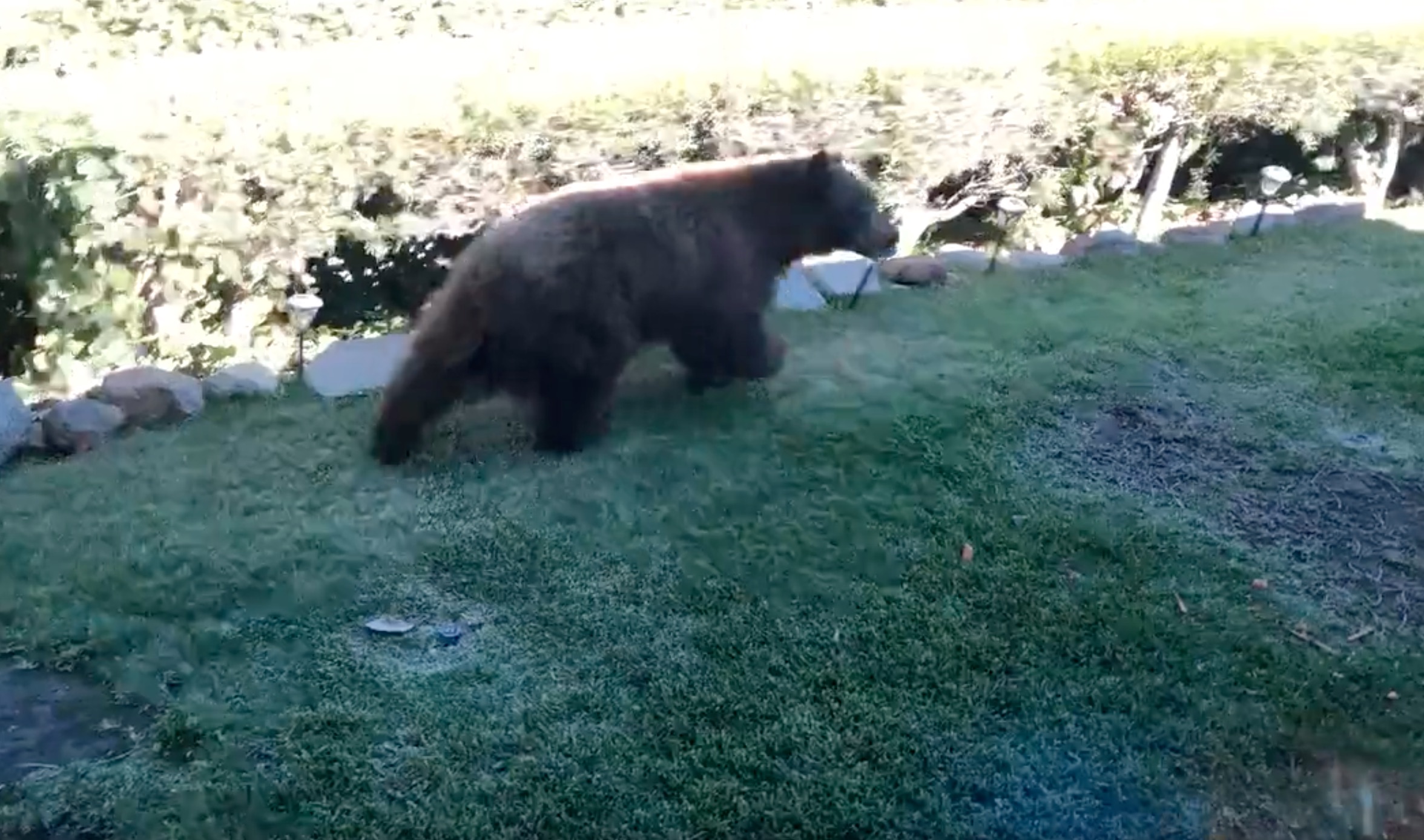
Wildlife officials were in a San Dimas neighborhood Wednesday where a bear seen near an elementary school climbed into a tree outside a home in the foothill community east of Los Angeles.
Authorities received calls at about 7:15 a.m. that the bear was “wandering” in the area before it climbed a tree at a house near Gladstone Street and Dallas Road. The location is about two miles from the nearest wilderness area to the north in the San Gabriel Mountains.
Bob and Carrie Pouliot said they saw the bear in the driveway of their home during its three-hour tour of San Dimas. The curious visitor walked around the home, knocked over a hummingbird feeder and climbed their avocado tree, where it appeared to settle on a branch.
The bear came down from the tree at about 11 a.m. The bear was tranquilized and removed from the neighborhood. It will likely be transported back to the wilderness.
About Bears in Southern California
Black bears, which can have different color coats, like to feed on plants, insects, nuts, berries and whatever else they think of as edible — such as the contents of trash bins. If food is scarce in their natural habitat, bears are likely to forage elsewhere, bringing them into Southern California foothill neighborhoods.
California’s black bear population has been on the rise over the last two decades, growing from an estimated 10,000 to 15,000 in the early 1980s to between 25,000 and 30,000 — and that’s a conservative estimate, according to the state department of fish and wildlife.
Black bears, recognized by their small, narrow heads and small ears, have coats that range in color from tan or brown to black. Females grow up to about 200 pounds and males can be a hefty 350 pounds with some giants weighing in at more than 600 pounds.
About half of the state’s bear population can be found in the Sierra Nevada Mountains and areas to the north and west. Only an estimated 10 percent of the black bear population inhabits central western and southwestern California.
Although its on the state flag, the fearsome grizzly bear no longer can be found in the California wild. The last grizzly bear observed in California was shot in the early 1920s.
